2023 Lexus RZ450e Arrives with 308 HP, Modest Range, and a Steering Yoke
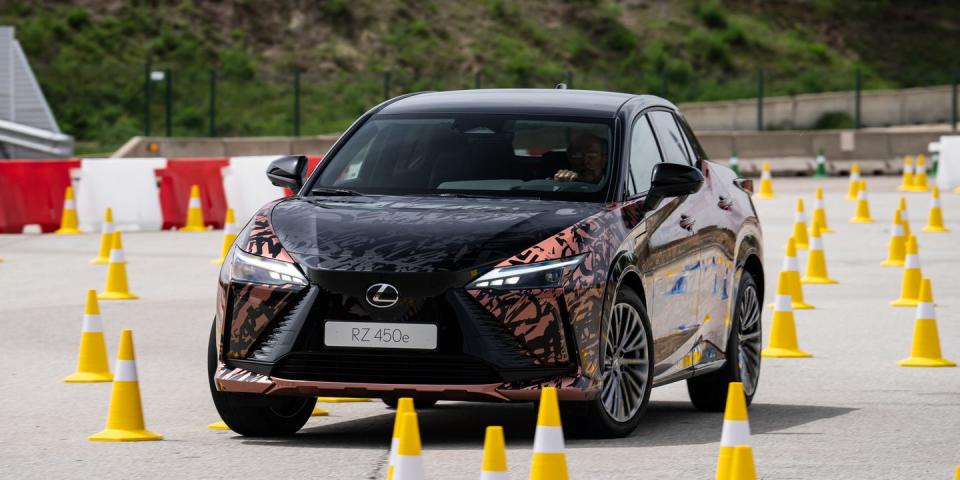
For years while German luxury-car makers were heavily committed to diesel engines, Lexus instead relied on hybrids to improve efficiency. After the Volkswagen emissions scandal put all diesels—even the majority that were not gaming the tailpipe tests—under a dark cloud, the German automakers jumped onto the EV bandwagon in an attempt to atone for their real and imagined sins. The resulting regulatory and competitive pressures have created an inexorable push for EVs, and Lexus could no longer hold out. So, at a time when most German luxury brands have already introduced three or four EV models, Lexus is releasing its first, the RZ450e.
The new entry is a crossover that's sized between the familiar Lexus NX and RX models, the brand's two top sellers in America. The RZ is built on a new platform called e-TNGA, which is also shared with its Toyota bZ4X sister ship and the closely related Subaru Solterra, both of which are just going on sale. Though the RZ is about three inches shorter in length than the RX, its 112.2-inch wheelbase is two and half inches longer, designed to enhance interior space. The RZ is also about three inches lower than its larger Lexus sibling.
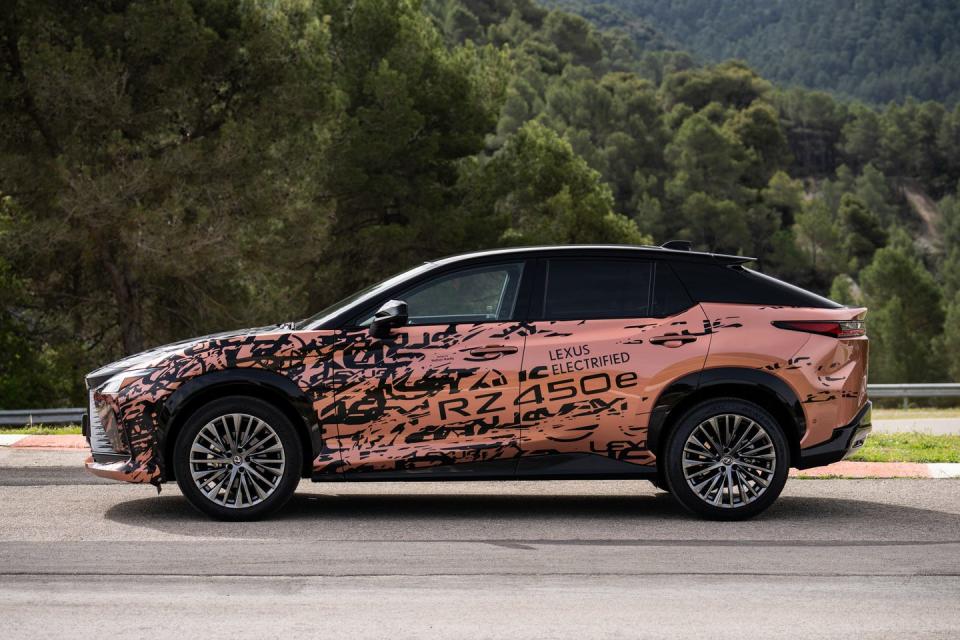
The powertrain, similar to the one in the bZ4X, uses separate electric motors for the front and rear axles. However, in place of the twin 107-hp motors in the all-wheel-drive Toyota, the AWD-only Lexus drives its front wheels with the 201-hp motor from the front-drive bZ4X, making for a total of 308 horsepower, 94-hp advantage over the dual-motor bZ4X.
A 65.6-kWh liquid-cooled battery pack shared with the all-wheel-drive bZ4X, which uses lithium-ion prismatic cells produced by a joint venture between Panasonic and Toyota, resides in a roughly six-inch-thick pack under the RZ's passenger compartment. This is not a huge battery capacity in the current market, and Lexus is estimating a range of only 200 to 225 miles, depending on wheel size.
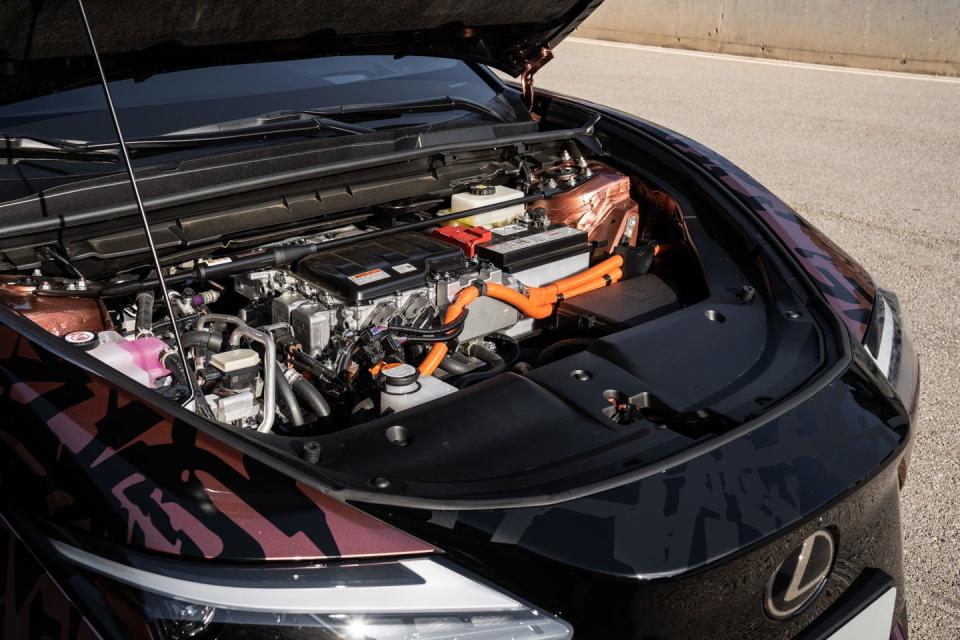
Takashi Watanabe, the RZ's chief engineer, says this battery size was a conscious choice, designed to limit weight and maximize electrical efficiency. According to him, tests indicate that the RZ gets 15 to 20 percent more mileage per kWh than its competitors—a worthwhile goal, though perhaps not at the expense of range. We're eager to test that claim.
Lexus provided no charging times for the RZ, but it can take only a maximum of 150 kW on a DC charger, so it won't be high on the fast-charging leaderboard. And the onboard charger is rated at just 6.6 kW, less than the current norm of about 10 to 11 kW, so a Level 2 full charge will likely require roughly 11 hours.
Watanabe seems unconcerned with such modest stats, insisting that the RZ will deliver a good compromise between range, efficiency, and performance. Speaking of which, Lexus offered no predictions about acceleration, but we would expect times to 60 mph in the mid-five-second area.
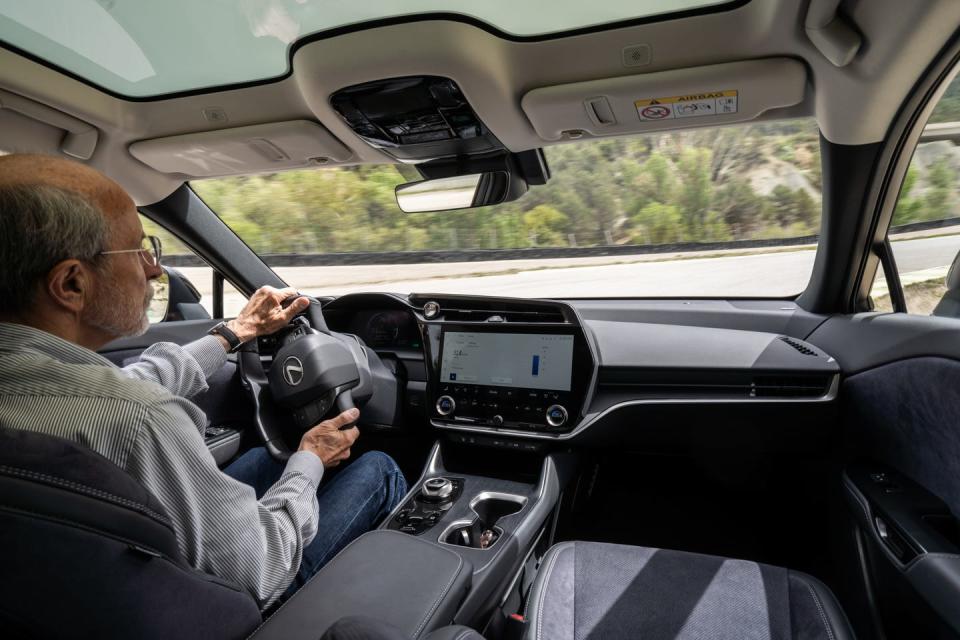
Instead of using of cutting-edge electrical infrastructure, the RZ seems more focused on new features, the key one being the available drive-by-wire steering, which uses a yoke-type steering wheel. A highly variable ratio is so quick at low speeds that only 300 degrees of rotation—less than one turn lock-to-lock—provides full travel. This is possible because there is no mechanical connection between the electrically powered steering rack and the steering yoke. (Originally dubbed One Motion Grip, this setup will be renamed, as the folks at U.S. headquarters concluded that OMG steering was not the best name in the States.)
Another interesting choice, given the emphasis on overall efficiency, is the use of a nonblended, purely hydraulic brake. Regenerative braking is controlled exclusively by releasing the accelerator and is adjustable but limited to a maximum of 0.15-g deceleration. This makes for conventional pedal operation and feel, but at the sacrifice of some efficiency and potential range.
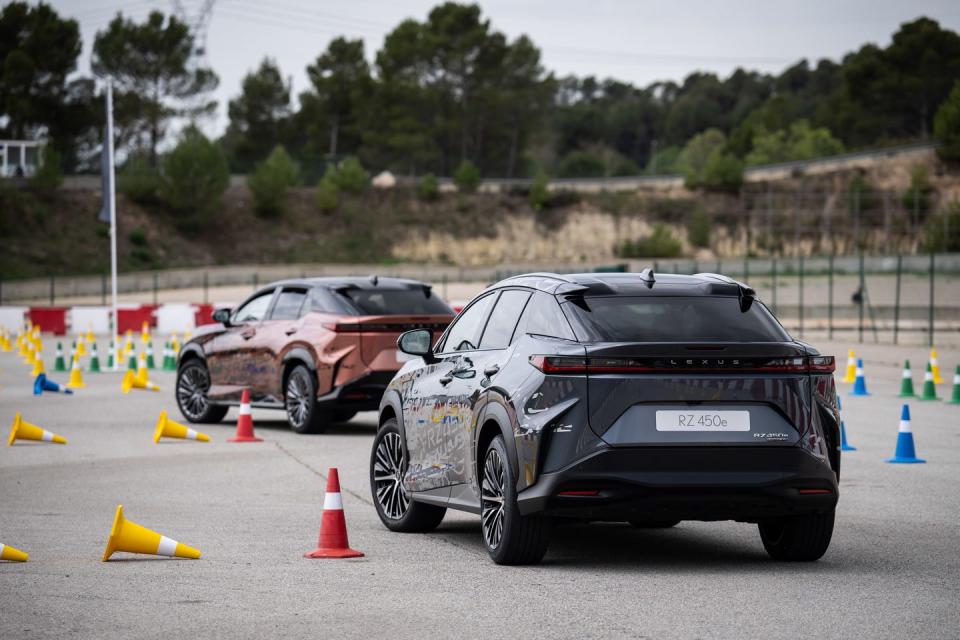

 Yahoo Autos
Yahoo Autos 